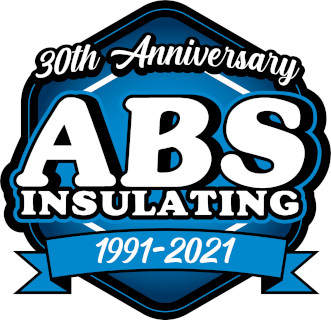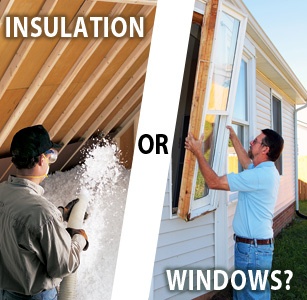
Building envelope
Your home’s envelope consists of the walls, floor and roof. When considering the total square footage of your home’s envelope, windows make up a very a small portion. By upgrading the energy efficiency of your home’s attic and walls, you will be maximizing energy efficiency across a greater portion of your home’s envelope and will see a greater energy benefit.
Air flow
Air inside a home naturally flows from ground to sky. A home loses 70% of energy through the attic and roof – far more than is lost through windows or doors. By upgrading your attic insulation, conditioned air will stay inside your home. Adding air sealing further prevents conditioned air from seeping out around ducts, attics and more.
R-value
R-value is a measure of the amount of heat flow a certain product resists. The higher the R-value, the better it reduces heat flow. The R-value of windows can vary based on the number of panes, air space between panes, etc.
Double pane windows have an R-value of 1.5 to 2. Upgrading insulation to current code would result in attic R-value of R-30 to R-38 in North Carolina. When you consider the difference in R-value and the natural heat flow in a home, it’s easy to see how a fresh blanket of insulation is a great investment.
Cost
When looking at the bottom line, your choice is clear. According to Home Advisor, the average cost to upgrade windows in the Charlotte area is $4,526. The same report shows the average cost to upgrade insulation in the Charlotte area is $1,124.*
Ready to add insulation to your attic? Contact us to schedule your free estimate.
* Project costs can vary.



 With an increase in green building techniques and tighter building envelopes that result, proper ventilation is increasingly important. Today’s homes are built tight to keep conditioned air in and help reduce energy bills. Tight building envelopes also keep air impurities inside the home including any chemicals used in cleaning products, paint, building materials and more. This combination makes a strong case for proper home ventilation system to maintain optimal air quality and maintain your home’s energy efficiency.There are many factors that influence the appropriate type of home ventilation including local code requirements, building size and types of appliances. Here are three of the most common ventilation systems:
With an increase in green building techniques and tighter building envelopes that result, proper ventilation is increasingly important. Today’s homes are built tight to keep conditioned air in and help reduce energy bills. Tight building envelopes also keep air impurities inside the home including any chemicals used in cleaning products, paint, building materials and more. This combination makes a strong case for proper home ventilation system to maintain optimal air quality and maintain your home’s energy efficiency.There are many factors that influence the appropriate type of home ventilation including local code requirements, building size and types of appliances. Here are three of the most common ventilation systems: